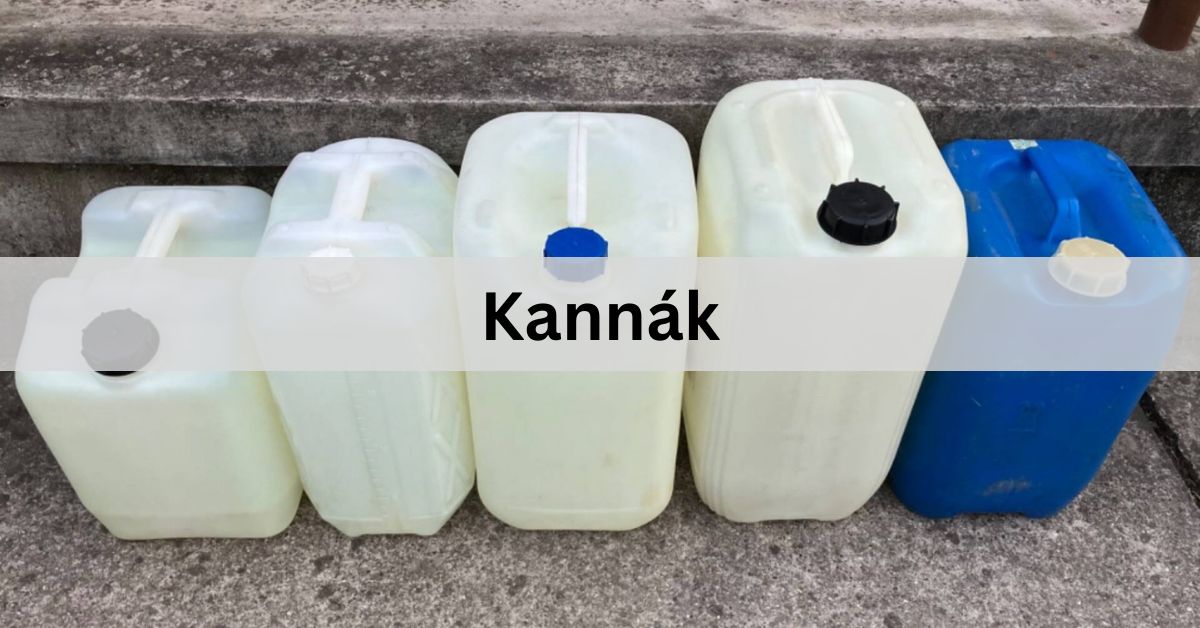The History of Kannák:
Kannák, a versatile tool deeply rooted in history, has been a vital instrument across various cultures for centuries.
Its origins can be traced back to ancient agricultural practices, where it was primarily used for tasks like planting and harvesting.
Early civilizations recognized the need for durable tools that could withstand the rigors of agricultural work, leading to the development of the kannák.
Over the years, as societies evolved and urbanized, the design and functionality of kannáks also transformed, adapting to meet the diverse needs of modern life.
Throughout history, different regions have produced unique variations of kannáks, often reflecting local materials and cultural practices.
For example, in some communities, wooden kannáks were favored for their natural availability and ease of crafting, while others preferred metal or plastic designs for their durability and longevity.
Today, kannáks are not just tools of necessity; they are also celebrated for their craftsmanship and innovation.
Types of Kannák:

Kannáks come in various forms, each designed to cater to specific needs and applications. Understanding the different types can help you choose the right kannák for your requirements, whether for personal, industrial, or commercial use.
Plastic Kannáks:
Plastic kannáks have gained immense popularity due to their lightweight nature and resistance to corrosion.
Made from high-quality polymers, these kannáks are often used in gardening, cleaning, and even in educational settings.
Their affordability makes them accessible to a broad audience, and their versatility allows for a range of applications.
Plastic kannáks are particularly favored in households and gardens for their ease of use. They can handle moisture and various environmental conditions without deteriorating, making them a reliable choice for outdoor tasks.
Additionally, many plastic kannáks are designed to be colorful and ergonomic, appealing to both functionality and aesthetics.
Metal Kannás:
On the other hand, metal kannás are celebrated for their strength and durability. Typically crafted from stainless steel or aluminum, these kannás are ideal for industrial applications where reliability is paramount.
Their robust construction allows them to endure heavy-duty tasks, making them essential in sectors such as construction, manufacturing, and engineering.
Metal kannás are also popular for their longevity. Unlike their plastic counterparts, they do not warp or fade over time, providing consistent performance in demanding environments.
Furthermore, their resistance to extreme temperatures and harsh chemicals makes them suitable for various industrial applications, ensuring they remain a staple tool for professionals.
Applications:

Kannáks serve a multitude of purposes across different sectors, highlighting their versatility. Understanding these applications can help you make informed decisions about how best to utilize kannáks in your daily life or business.
Household Use:
In households, kannáks are indispensable tools for a wide range of activities, including gardening, cleaning, and organization.
Whether you’re potting plants, watering gardens, or managing household chores, a good kannák can significantly ease your workload.
Their ergonomic designs often incorporate comfortable grips, making them user-friendly for people of all ages.
Furthermore, plastic kannáks are excellent for indoor use, such as organizing small items in kitchens or utility rooms.
They are easy to clean and maintain, ensuring they remain functional for years. In contrast, metal kannás might be used for heavier tasks, like moving equipment or tools, proving their adaptability in a home setting.
Industrial Use:
In industrial settings, kannáks are vital for processes such as construction, manufacturing, and logistics.
Their sturdy design and functionality contribute to streamlined operations, making them an essential part of the toolkit for many professionals.
Metal kannás, in particular, are favored in industries requiring robust equipment capable of handling heavy loads and rigorous demands.
For example, in construction sites, metal kannás are often used for lifting and moving materials, while plastic variants might serve to organize tools or components.
The adaptability of kannáks in such environments underscores their significance in enhancing workplace efficiency and safety.
Commercial Use:
Businesses across various sectors utilize kannáks for their versatility. From retail environments to warehouses, these tools help manage inventory and maintain organization.
In commercial settings, having reliable tools like kannáks can significantly enhance productivity and efficiency.
For instance, in a retail environment, plastic kannáks might be used for restocking shelves or organizing displays, while metal kannás could serve in back-end operations for handling stock. Their ability to simplify tasks makes them invaluable assets in commercial enterprises.
Environmental Applications:
Kannáks also play a crucial role in environmental initiatives. They are used in recycling efforts, waste management, and sustainability projects, showcasing their importance in promoting eco-friendly practices and responsible resource management.
Plastic kannáks are often employed in community gardening projects or recycling programs, helping to encourage sustainable living.
Moreover, many industries are adopting metal kannás as part of their commitment to sustainability, opting for durable tools that reduce the need for frequent replacements.
This focus on environmental responsibility not only enhances operational efficiency but also supports broader ecological goals.
Kannák is a versatile tool with a rich history, originally used in agriculture, that has evolved to serve various functions today, including household, industrial, and environmental applications.
FAQs:
1. What is a kannák?
A kannák is a versatile tool used for various tasks, including gardening, cleaning, and industrial applications.
2. What materials are kannáks made from?
Kannáks are primarily made from plastic and metal, each suited for different applications and durability needs.
3. Where are plastic kannáks commonly used?
Plastic kannáks are commonly used in households and gardens due to their lightweight nature and resistance to moisture.
4. Why are metal kannás preferred in industrial settings?
Metal kannás are preferred for their strength, durability, and ability to withstand heavy-duty tasks in demanding environments.
5. How do kannáks contribute to environmental initiatives?
Kannáks are used in recycling and sustainability projects, promoting eco-friendly practices and reducing the need for frequent replacements.
6. What are the benefits of using plastic kannáks?
Plastic kannáks are lightweight, affordable, and resistant to moisture, making them ideal for gardening and household tasks.
7. How do I choose the right kannák for my needs?
Consider the material, intended use, and specific tasks when selecting a kannák to ensure it meets your requirements effectively.
Conclusion:
In conclusion, kannáks are essential tools with a rich history, evolving to meet diverse modern needs. Their applications span households, industries, and environmental initiatives, highlighting their versatility and importance. Choosing the right kannák enhances efficiency and sustainability, making them invaluable assets in everyday tasks and professional settings alike, contributing positively to society and the environment.



